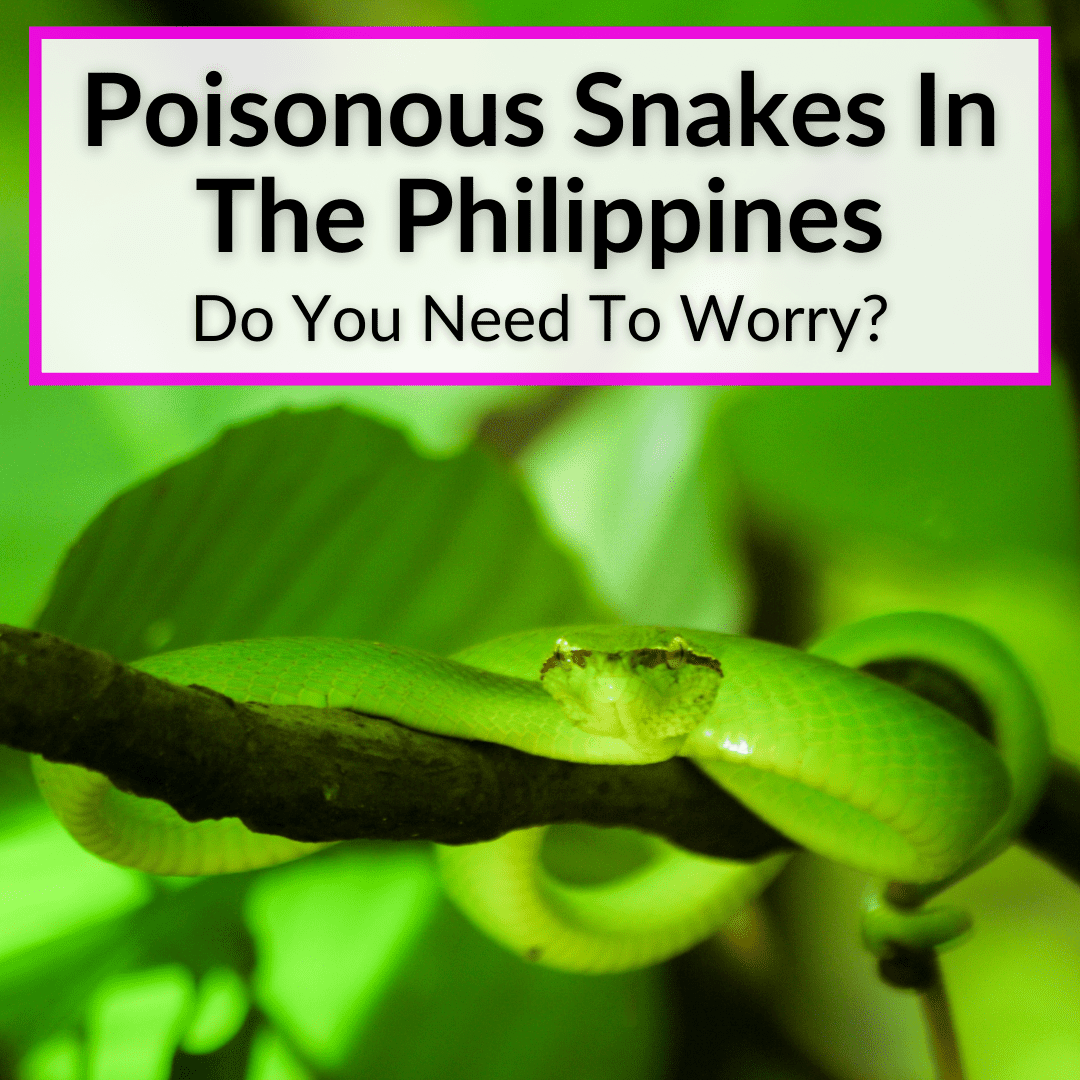
But it is also a dangerous one.
As always, the biggest dangers are human.
But there are plenty of poisonous snakes in the Philippines, too.
The chances of encountering one on a trip are low. Even if you live there, the snakes all prefer to avoid humans.
But contact is not impossible. It is never a bad idea to know what the venomous snakes look like and where you might find them
Keep reading to learn about the major species of venomous snakes in the Philippines.
Poisonous Snakes In The Philippines
The snakes listed below all can the Philippines home and they are all venomous. Moreover, they are deadly. There are both land and water snakes in the country, while makes sense considering it is an island nation.
As for my use of the word “poisonous”, you may be aware that it is not the correct term. Poison is something you ingest. Snakes are venomous, not poisonous.
However, more people actually search in Google using the word “poisonous”, so you will often see it on this site, both in titles and in the articles themselves.
That way even people who search using the word “poisonous” can find my site, and hopefully learn that the correct word is “venomous.”
Wagler’s Pit Viper
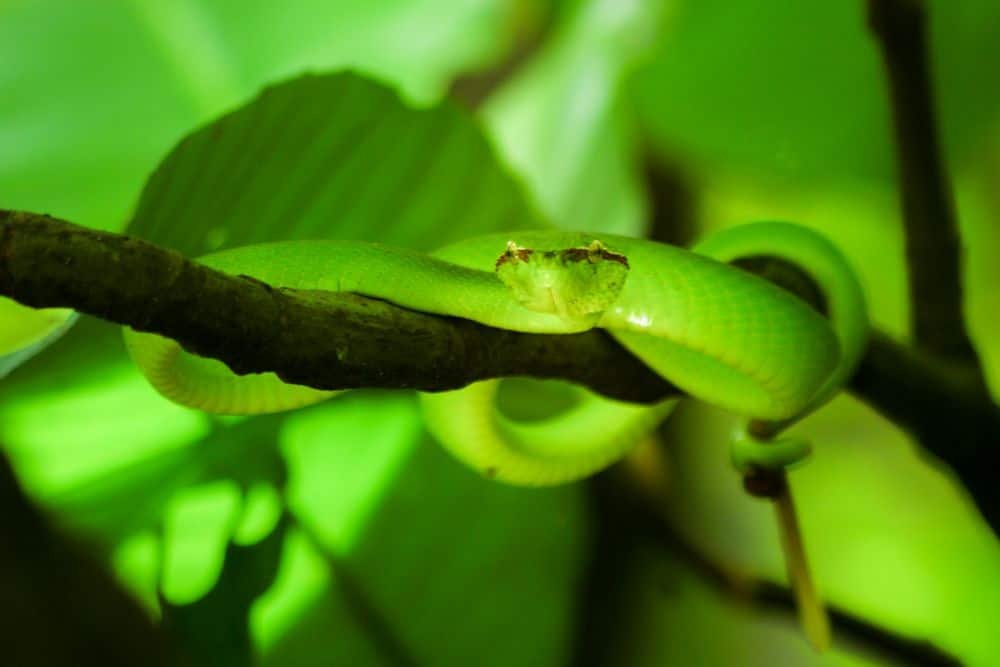
The Wagler’s Pit Viper is commonly found in the Philippines and all over Southeast Asia. Also called the Temple Pit Viper, this venomous snake lives in mangroves and lowland forests. They spend most of their time resting in the trees, several feet above the ground.
They can rest like this for a couple of days while they digest their food. They only come down when they are searching for prey, which consists of small rodents and birds.
Appearance
You can distinguish Wagler’s Pit Vipers by the heat sensors on each side of their triangular heads. They use these sensors to detect prey within the vegetation.
They have a bright lime green body, and you can easily differentiate between male and female species. Male Vipers have red and cream-colored spots on their top, with a reddish-brown tail. On the other hand, the females have a thicker abdomen with a dark-colored top. They also have white and yellow bands on their underbelly.
Behavior
The Wagler’s Pit Viper may be poisonous, but it doesn’t display aggression, particularly towards humans. But this doesn’t mean you should consider making friends with them. They are still venomous, although their venom attacks red blood cells rather than the nervous system.
King Cobra
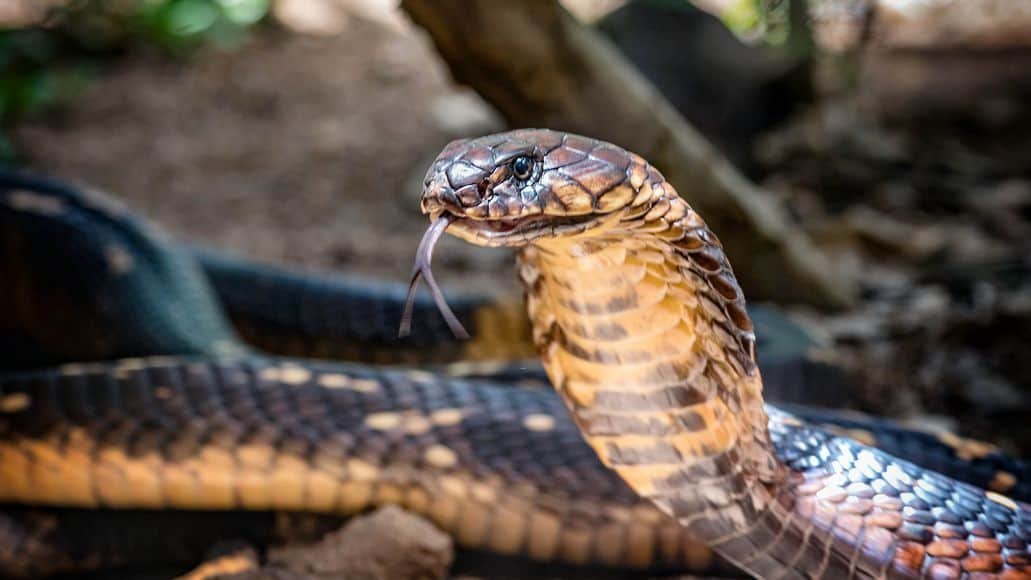
The King Cobra is another venomous snake found in the Philippines. This snake can live up to 20 years on average. It is also large. It can square off against a human being while facing them eye to eye.
The King Cobra is usually found in mangroves, rainforests, mountain grasslands, and rivers. They feed on eggs, lizards, small mammals, and other snakes.
Appearance
A unique feature of the King Cobra’s appearance is its length. This species can grow up to 18 feet long, making it one of the largest and most intimidating snakes on earth.
They have enough stability and balance to attack, even when they raise more than half of their body off the ground. This snake is also known for its hood and its loud hissing sound that acts as a warning signal.
Behavior
Generally, King Cobras are quite shy and try to avoid human contact. However, if you try to cross their path or call them out, they will rear their heads and give you their famous hiss to keep you away.
You don’t want to agitate an 18 foot King Cobra taller than you in its striking pose. Although its venom is less potent than other snakes in the region, it injects a lot and the amount of neurotoxin it delivers can cause instant cardiac and respiratory failure.
Some cultures believe that dreaming of a King Cobra is a warning. A warning about what? We cover it all in our article “What Does It Mean When You Dream About Snakes?”
Yellow-Lipped Sea Krait
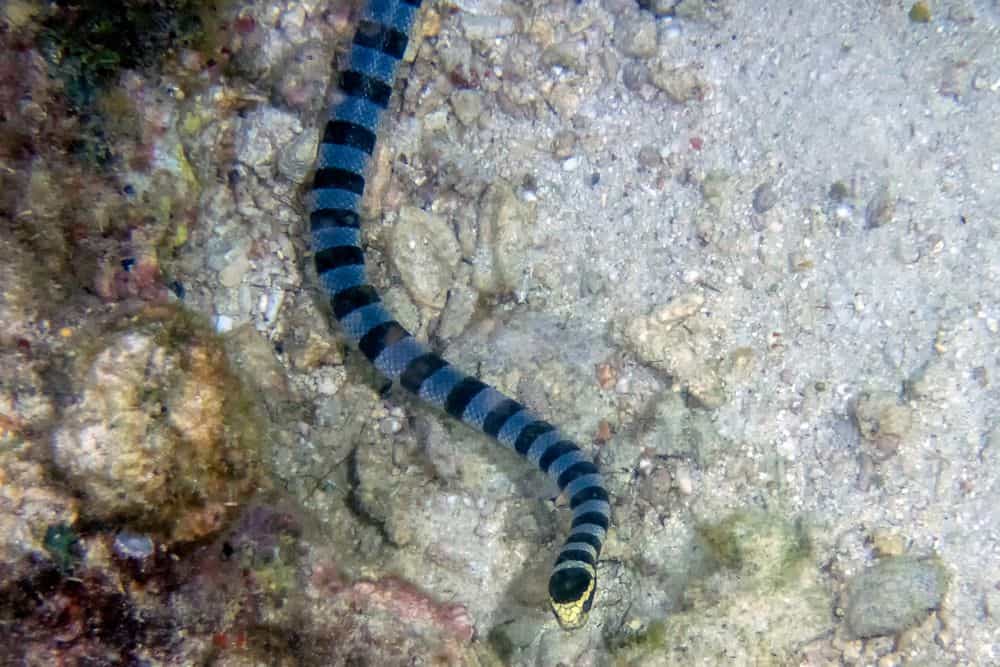
The Yellow-Lipped Sea Krait is a highly dangerous species that can release high amounts of neurotoxic venom with its bite. It is a semi-aquatic creature that you can also find on land.
It is drawn towards light, so it will sometimes head toward buildings located close to the coastline. It mostly feeds on small fish and eels in the sea. Fishermen actually catch the Sea Krait and export it to Japan, where they use its skin and meat.
Appearance
The Yellow-Lipped Sea Krait gets its name from its yellow upper lip, snout, and cheeks on its black head. It has a light grey body with black bands and a light yellow underbelly. Its tail resembles a paddle, which allows it to swim underwater easily. It can grow up to 4.5 feet in length over the course of its lifespan.
Behavior
Like the other snakes discussed above, the Yellow-Lipped Sea Krait doesn’t have an aggressive nature and usually keeps to itself.
It avoids humans, but won’t hesitate to attack you, if you corner it or otherwise threaten or startle it. It also likes to rest in plumbing or exhaust pipes, but it is unlikely to use them to end up inside a building, or even your shower drain.
Equatorial Spitting Cobra
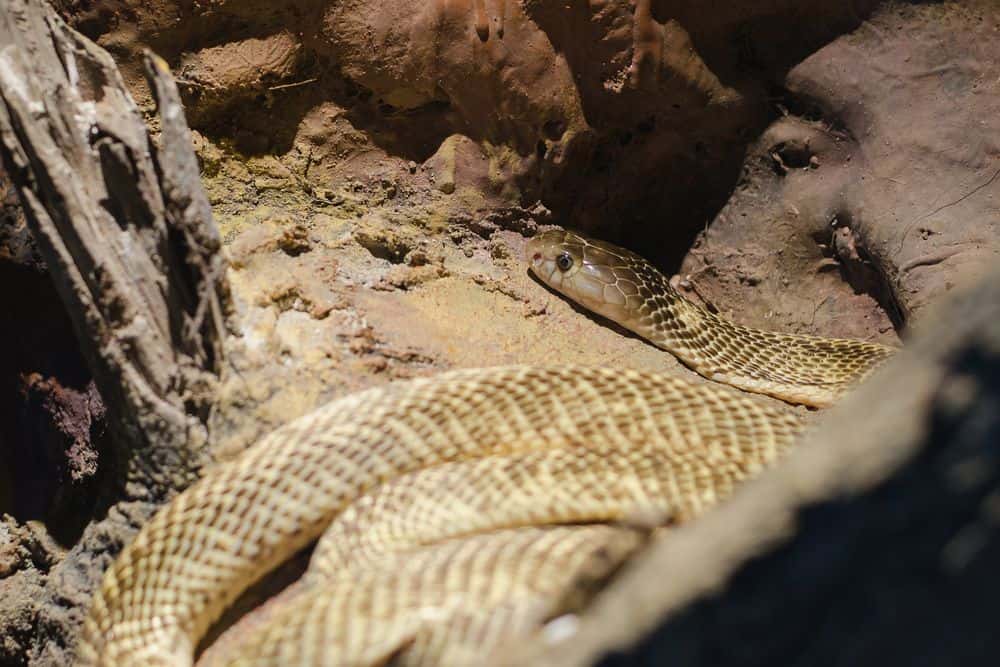
Another common venomous snake found in the Philippines is the Equatorial Spitting Cobra. We advise proceeding with absolute caution in the lowlands where it is found. This species has also made its home in city regions with a lot of greenery. You might spot it even in urban areas, if you live near lots of trees and plants. It usually eats amphibians and rodents.
Appearance
The Equatorial Spitting Cobra has the cobra fan neck, distinguishing it from other snakes. It has a black and grey or bluish-black body, and it grows to a length of 3 feet.
Behavior
This snake isn’t aggressive, but if threatened, it will raise its body and hiss loudly, warning anyone nearby. If you don’t step back, it will spray venom, which can be lethal and burn your skin if not washed immediately. It might choose to bite you without warning, and the venom is toxic enough to kill you within 30 minutes.
Lake Taal Snake
The Lake Taal Snake is native to Lake Taal in the Philippines, hence its name. It is the only sea snake in the region found in freshwater. Since Lake Taal is volcanic, these snakes are used to acidic waters. They don’t live anywhere else.
They feed on small fish in the lake and do not bother humans, unless we bother them. Then they can be deadly.
Appearance
Lake Taal Snakes have a dark-colored body with yellow brands all over them. They are shorter than the other species listed here, ranging from 1.6 to 2.3 feet. They have a paddle-like tail that makes it easier for them to move in water, and the valves inside their nostrils keep them from inhaling or swallowing water.
Behavior
Lake Taal Snakes are one of the most venomous snakes you can find in the Philippines. Their venom has a lot of toxins that can take you out within minutes. They like to keep to themselves, so it is good Lake Taal does not get a ton of visitors. But it does still get too many and these snakes’ habitat has been damaged due to human intervention and increasing water pollution.
Philippine Venomous Snakes: Final Thoughts
There are a number of deadly venomous snakes in the Philippines, both on land and in the water. Luckily, none of the snakes are overly aggressive. If you avoid them, they will avoid you.
But you do need to be careful not to startle or accidentally corner them. If they feel threatened and see no escape, they will attack. And many of them can easily kill you with their venom.
If you are going to spend time in nature, it is a good idea to familiarize yourself with any venomous snakes in the area. Learn where they hang out and how to identify them. Then do your best to avoid them.
amor says
what kind of snake is big green snake with light yellow in tail?